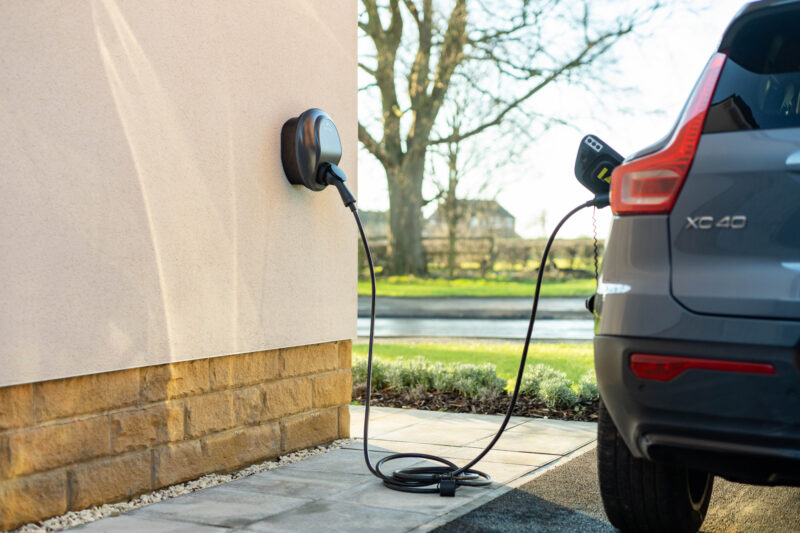A Guide to Portable EV Chargers
A guide answering questions around portable chargers for electric vehicles (EVs) and assessing how they compare to home chargers.
Last updated: Jul 26, 2024 • 5 min read

Summary
A portable EV charger works on the same principle as a powerbank to provide an EV with enough miles to reach a public charger. They’re currently only available for commercial use in the UK.
What is a portable EV charger?
Portable EV chargers are an innovation in the electric motoring space trying to tackle a common concern – range anxiety. Although ranges of electric cars have increased significantly in the last decade, with many entry-level EVs easily covering 250 miles and more on a single charge, the worry still persists among some drivers.
A portable EV charger is similar to a battery power bank, which you can use to charge devices such as smartphones, tablets and headphones on the go. They provide a temporary energy boost and, in some cases, even recharge a battery multiple times with ease. While the principle is the same, a portable charger for electric cars doesn’t fully recharge a battery. Instead, it provides enough energy to get an EV to the nearest public charger.
Things to consider before purchasing a portable EV charger
Portable EV chargers only offer around a 20-mile charge, which should be enough to get you to a nearby public charging station. This means portable chargers aren’t suitable for replacing home or public chargers. You shouldn’t rely on them to do the core of your charging due to the very limited range they provide.
Think of a portable charger like an EV emergency charge pack. On long journeys with limited public charger coverage, they can offer some reassurance. If, for whatever reason, you get stuck and run out of charge, portable EV chargers give you the ability to get back on the road quickly, without having to call roadside assistance.
If you plan your journey ahead of time, you likely won’t ever need a portable EV charger. Before embarking on a long trip, we recommend:
Taking note of compatible charging stations on the route
Having more than one option for each planned charging stop in case your first charging option is out of order
Giving yourself extra time should you have to wait at the charging station
Want to know more about preparing for long journeys with your EV? Read our tips on how to plan a road trip with an EV in our guide.
What types of portable EV chargers are there?
Although a number of portable chargers for EV drivers were released in the past, there are currently none available to purchase for private consumers in the UK market. These models tended to offer AC charging with power ratings of up to 9.6kW, which is similar to a standard home charger, and were compact enough to fit into a boot. Still, the range these portable chargers could provide was limited to around 20 to 40 miles at most.
There are a limited number of commercial portable EV chargers that are available to purchase. They are of the fast charging (DC) type with power ratings of up to 20kW. They’re larger than portable chargers for private EV drivers and consist of multiple batteries, forming a charging pack with more capacity. Depending on the pack, commercial-grade portable EV chargers can add up to 70 miles of range to an EV battery. They don’t fit into a passenger-sized electric car, like a hatchback or SUV, and will have to be transported in a separate van for roadside assistance.
Can I use any cable with my portable EV charger?
For an AC portable EV charger, you’ll need a cable that is compatible with the charger and your EV. Most slow chargers use a Type 2 vehicle-side connector in the UK with a current rating of 16A. These EV cables are typically thinner, making them easier to handle and store.
Commercial DC portable chargers have tethered cables, so one that is permanently connected to the charger, meaning you won’t need a separate cable. Most vehicle-side connectors for DC charging are CCS connectors. The tethered cable will have a current rating of 32A and be thicker than an AC charging cable. This makes it more difficult to handle and store these cables.
We recommend cables with a length of 5m, as they offer a good reach while being fairly compact when storing. Longer charging cables are available, giving you the option to access charging even if the vehicle isn’t parked up right next to the device. However, with a portable charger, this won’t be an issue and a 5m or even shorter cable should be enough.
Do I need a portable EV charger?
The short answer is no. With some simple planning, you’re unlikely to need a portable EV charger. The limited range they offer will only provide enough energy to take you to the next charging station, so a portable charger isn’t a reliable substitute for a public or home charger.
Considering the upfront cost and limited charging capabilities, using a home charger is still the best way to do the bulk of your charging. The Solo home charger allow you to charge your battery in a cost-effective way.

